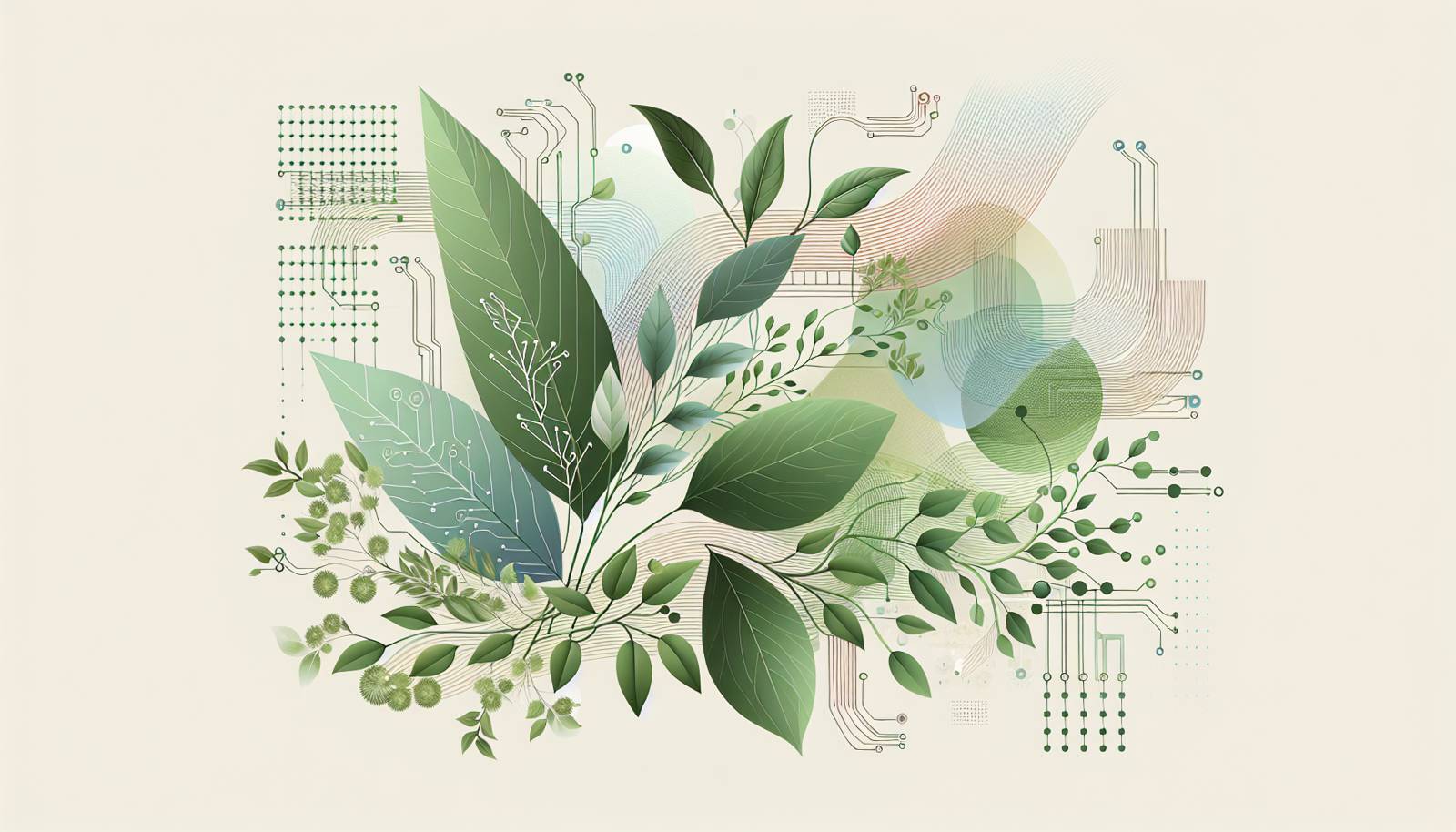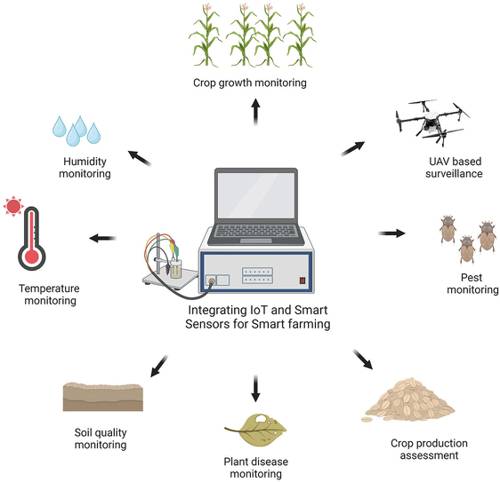
FAQ About Interfacing Indoor Plants with Internet of Things (IoT)

What are IoT devices in the context of indoor plants?
IoT devices in the context of indoor plants are technological tools integrated with sensors and internet connectivity that monitor and manage various aspects of plant care. These devices collect data on environmental conditions such as light, humidity, temperature, and soil moisture, letting plant owners optimize growth conditions and receive alerts or recommendations for care.

How do IoT devices monitor indoor plant health?
IoT devices monitor indoor plant health by using sensors to track various environmental parameters including soil moisture, light levels, temperature, and humidity. This data is then analyzed to provide insights into the plant's condition and notify users if any interventions, like watering or adjusting lighting, are necessary.

Can IoT systems automate indoor plant care?
Yes, IoT systems can automate indoor plant care by using smart devices to control watering, lighting, and even nutrient delivery based on real-time environmental data. Automation can be set through predefined thresholds or user preferences, ensuring optimal conditions for plant growth without constant manual intervention.

What are the benefits of using IoT for indoor gardening?
The benefits of using IoT for indoor gardening include increased plant health through optimal growing conditions, reduced manual effort in plant care, timely alerts for intervention needs, and the ability to monitor plant health remotely. These advantages can lead to more efficient gardening and better understanding of plant needs.

Are there any specific IoT devices recommended for indoor plants?
Specific IoT devices recommended for indoor plants include smart sensors like Parrot Flower Power or Xiaomi MiFlora for monitoring soil moisture and light, smart watering systems such as Rachio or Orbit for automatic watering, and smart lights from companies like Philips Hue which can adjust light conditions based on plant needs.

How can IoT help in optimizing environmental conditions for indoor plants?
IoT helps in optimizing environmental conditions for indoor plants by providing real-time data that can be used to adjust factors such as lighting intensity, irrigation schedules, and temperature settings. Devices can make these adjustments automatically or alert users to make necessary changes to maintain optimal growth conditions.

Do IoT solutions require Wi-Fi to work with indoor plants?
Most IoT solutions for indoor plants require a Wi-Fi connection to function optimally, as they communicate data between sensors and user applications via the internet. However, some systems might offer local Bluetooth connectivity for more basic monitoring functions without internet.

What skills are needed to install IoT systems for plant care?
Installing IoT systems for plant care typically requires basic technical skills such as setting up Wi-Fi connections and using smartphone apps to configure and monitor devices. However, most systems are designed to be user-friendly, with guided setups and minimal technical expertise required.

Is it expensive to implement IoT in indoor gardening?
Implementing IoT in indoor gardening can vary in cost depending on the sophistication and number of devices used. Basic monitoring sensors can be relatively affordable, while more comprehensive systems with automated watering and lighting setups can be more costly. Budgeting depends on the desired level of automation and monitoring complexity.

How can IoT technology integrate with other smart home systems?
IoT technology can integrate with other smart home systems through platforms like Apple HomeKit, Amazon Alexa, or Google Assistant. These integrations allow users to control plant care alongside other smart home functionalities, creating a cohesive smart environment where indoor plant care can be managed through voice commands or centralized apps.

Can using IoT with indoor plants save water?
Yes, using IoT with indoor plants can save water by precisely monitoring soil moisture levels and scheduling water only when necessary. This prevents overwatering, reducing water waste and improving plant health by ensuring they receive the right amount of water for their specific needs.

What are common challenges faced when using IoT devices with indoor plants?
Common challenges include ensuring reliable internet connectivity, integrating multiple devices from various manufacturers, managing data privacy concerns, and dealing with potential technical malfunctions. Additionally, users may face learning curves in setting up and using IoT systems effectively, or budget constraints in acquiring comprehensive systems.

How does data from IoT devices help in indoor plant research?
Data from IoT devices helps in indoor plant research by providing continuous and precise environmental monitoring data. This information can be used to study plant responses to different conditions, optimize growth strategies, and conduct experiments that require real-time tracking of plant health and environmental changes.

Why might IoT not be suitable for all indoor plant enthusiasts?
IoT might not be suitable for all indoor plant enthusiasts due to factors like cost, complexity of setting up the equipment, comfort level with technology, or personal preference for traditional gardening methods. Some enthusiasts might prefer to rely on their own observations and manual care rather than technological solutions.

Do IoT devices collect personal data when used for indoor plant care?
IoT devices used for indoor plant care generally collect data related to environmental conditions and device interactions, not personal data. However, users should be mindful of the privacy policies of the apps they use, as some might collect user behavior data or require account creation with personal information.

How often do IoT systems need maintenance when used with plants?
IoT systems for indoor plants typically require minimal maintenance, with occasional battery changes or firmware updates being necessary. Regularly checking device functionality and ensuring internet connectivity are usually the main maintenance tasks. However, specific systems and devices could have unique maintenance requirements that users need to follow according to manufacturer guidelines.

What is the role of AI in IoT systems for indoor plants?
Artificial Intelligence (AI) plays a pivotal role in IoT systems for indoor plants by analyzing the data collected from various sensors. AI algorithms can predict plant needs, adjust growth conditions dynamically, and even identify potential health issues before they become severe, thus providing proactive plant care solutions.

Can IoT systems predict when indoor plants will need attention?
Yes, IoT systems can predict when indoor plants will need attention by using sensor data and AI algorithms to analyze trends and detect conditions that require intervention. These systems generate alerts or recommendations for actions such as watering or adjusting lighting, ensuring that plants receive timely care.

How secure are IoT devices in the context of indoor plant care?
The security of IoT devices in indoor plant care can vary. It is important to choose devices from reputable manufacturers that offer regular software updates and security patches. Users should also follow best practices for IoT security, such as setting strong passwords and keeping device firmware up to date, to protect their systems from potential vulnerabilities.

Can IoT systems be customized for different types of indoor plants?
Yes, IoT systems can often be customized for different types of indoor plants by adjusting settings to suit the specific needs of various species. This can include setting parameters for optimal light exposure, humidity, and watering schedules, allowing each plant type to receive care tailored to its unique requirements.
